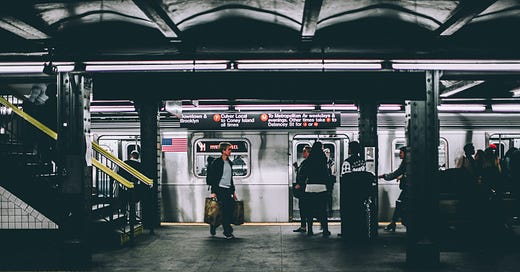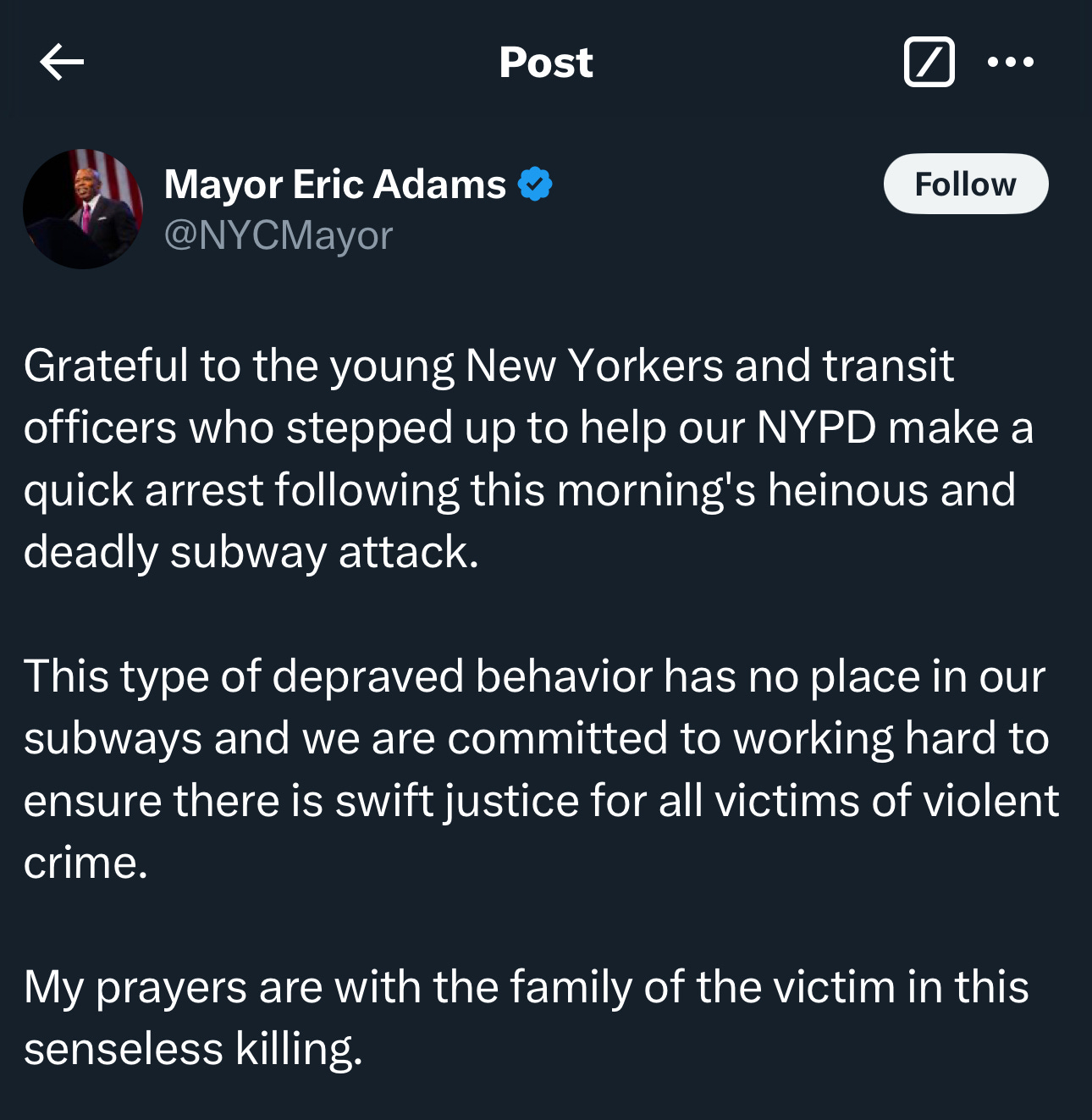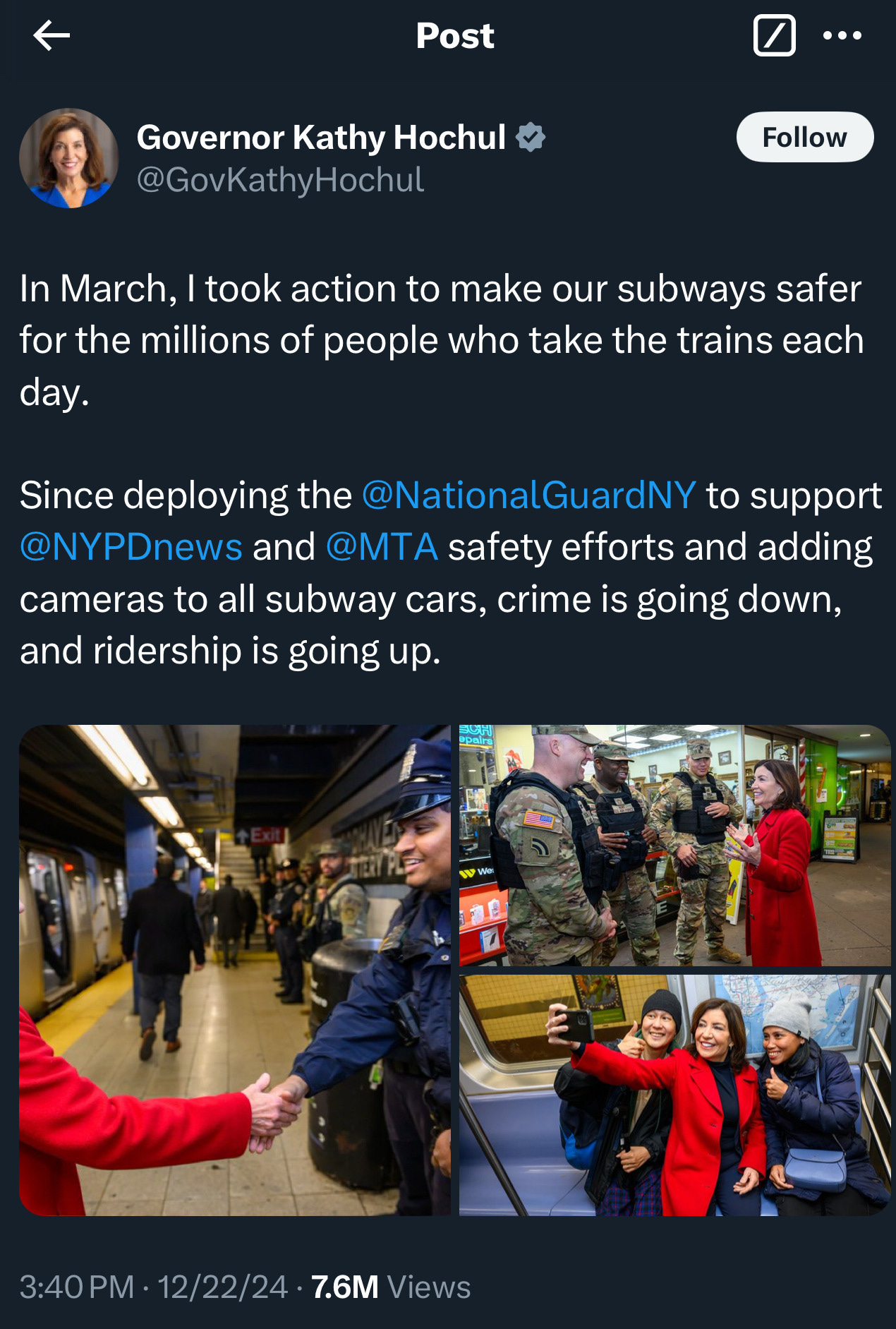Engulfed by Tragedy: The NYC Subway Fire and Its Broader Implications
The fatal attack on a homeless woman sparks debates on safety, immigration, and homelessness in America.
Update (Jan. 5, 2025): The homeless woman who was set on fire on the F train at Coney Island’s Stillwell Station on Dec. 22, 2024, has been identified as Debrina Kawam, from Toms River, New Jersey.
New Yorkers were horrified following a subway attack that led a woman to be burned alive while sleeping on a New York City Subway train in Brooklyn. The incident, which occurred in the early hours of Dec. 22, unfolded when a man approached the sleeping woman, doused her with an accelerant, and used a lighter to ignite the flames.
Sebastian Zapeta-Calil, an undocumented immigrant from Guatemala, has been charged with first- and second-degree murder, as well as arson. The 33-year-old’s arrest has reignited contentious debates around subway safety, homelessness, and immigration, with the incident serving as a flashpoint for broader societal tensions.
The Incident
The attack occurred last Sunday morning on a subway train at the Coney Island-Stillwell Avenue station in Brooklyn. Sebastian Zapeta-Calil approached the sleeping woman, who was homeless and using a walker, and set fire to her clothes with a lighter. The woman, badly burned and unidentifiable, was engulfed in flames as bystanders on the platform recorded the scene in horror and called for help.
According to reports by CNN, Zapeta-Calil then exited the subway car, sat on a bench, and watched the woman burn. He later stood up and fanned the flames with a T-shirt. After fleeing the scene, he was arrested at the Herald Square subway station in Midtown Manhattan after three high school students recognized him.
The woman was pronounced dead at the scene. Autopsy results have confirmed that the victim’s cause of death was heat-related burns and smoke inhalation, and her death was ruled a homicide.
Zapeta-Calil was deported from the United States in 2018 after entering through the Arizona-Mexico border, it is unknown when or how he re-entered the country. After appearing in a Brooklyn court on Tuesday, he pleaded not guilty to the preliminary charges. Prosecutors later added that Zapeta-Calil told police that “he drinks a lot of liquor” and “doesn’t know what happened.”
Public reaction to the immolation was swift, with New York City Mayor Eric Adams posting on X,
“This type of depraved behavior has no place in our subways, and we are committed to working hard to ensure there is swift justice for all victims of violent crime,” said Adams.
The mayor also directed the New York City Police Department (NYPD) to work with federal officials to “explore criminal charges…under the federal arson statute” in a statement released by Adams’ Press Secretary, Kayla Mamelak.
“Lighting another human being on fire and watching them burn alive reflects a level of evil that cannot be tolerated. That is why, in coordination with Police Commissioner [Edward] Tisch, Mayor Adams has directed the NYPD to work within our legal authority and in partnership with ICE's Homeland Security Investigations team to explore criminal charges against Mr. Zapeta-Calil under the federal arson statute,” Mamelak wrote.
The actions by the Adams administration following the subway immolation reflect changing attitudes toward undocumented immigrants. It surprised many, as New York City has historically been a "sanctuary city," with policies that discourage the forced deportation of undocumented immigrants.
Safety Concerns on Public Transportation
The incident has heightened broader fears surrounding safety on public transportation. According to Gothamist, there have been twice as many homicides in the New York City Subway this fall compared to fall 2023. The same weekend as the subway immolation, other violent acts occurred, including a stabbing in Queens, and a shooting on a subway platform in Brooklyn.
“There's no way you can really feel safe. There's no way, it really has gotten really bad over the last few years,” said commuter Dashauna Jackson in an interview with Gothamist.
Perspectives such as Jackson’s reflect growing unease during a tense period for subway safety. The acquittal of Daniel Penny, who faced backlash for placing Jordan Neely, a homeless man, in a fatal chokehold last year in Lower Manhattan, continues to cast a shadow over public discourse.
The NYPD reported on Dec. 3 that crime rates have been down in the city and the subway system. Major crimes down nearly 2% since 2023, and overall crime has decreased by 5.7%. Subway crime specifically dropped 6.3% over the past year. Grand larceny accounts for the majority of reported subway crimes, followed by felony assaults, which leave victims with permanent injuries. A total of 548 felony assaults were reported in the subway system over the past year.
However, New York Gov. Kathy Hochul faced criticism for touting the subway’s safety in an X post, hours after the subway immolation.
“In March, I took action to make our subways safer for the millions of people who take the trains each day. Since deploying the @NationalGuardNY to support @NYPDnews and @MTA safety efforts and adding cameras to all subway cars, crime is going down, and ridership is going up,” Hochul wrote.
Criticism came from both sides of the aisle, with Democratic Rep. Ritchie Torres dismissing her comments as “tone-deaf.”
“Two hours ago, Kathy Hochul took a victory lap for making subways ‘safer.’ She congratulates herself on the same day two subway riders were stabbed in Queens (one in the face and one in the chest) and another was barbarically burned alive,” wrote Torres.
Meanwhile, incoming Border Czar Tom Homan criticized Hochul during a Fox News interview, fueling anti-immigrant sentiments,
"Governor Hochul, shame on you. There's nothing you can say that's going to make this right in New York, here's another example of an illegal alien killing an American citizen. It's almost a daily occurrence now, because a historic number of criminal aliens are walking the streets, because of this administration's policy in sanctuary jurisdictions and lax immigration enforcement,” said Homan.
The Immigration Debate
Zapeta-Calil’s undocumented status comes at an already volatile time regarding immigration. President-elect Donald Trump has faced controversy for his promises regarding immigration, including mass deportations of undocumented immigrants and calls to change the Constitution to end birthright citizenship, denying citizenship to U.S.-born children of undocumented immigrants.
“We obviously have to make the border strong and powerful and, and we have to — at the same time, we want people to come into our country, and you know, I’m not somebody that says, 'No, you can’t come in.' We want people to come in,” said Trump in an interview with NBC.
Reports from the Pew Research Center indicate that the undocumented population rose to 11 million in 2022 –- the most recent estimate—up from 10.5 million in 2021 but still below the peak of 12.2 million in 2007.
In anticipation of Trump’s second term, Mexican President Claudia Sheinbaum’s administration launched an app aimed at protecting Mexican migrants in the event they are detained by U.S. immigration officials. The app, called "Alert Button," allows migrants to warn relatives and the nearest Mexican consulates. The administration has encouraged all Mexican citizens with U.S.-born children to register with the consulates.
“Not everyone has done this yet. We strongly encourage everyone to register with our consulates as this enables us to provide legal protection when needed,” Mexican Foreign Secretary Juan Ramón de la Fuente said in an interview with Axios.
University of California, San Deigo professor Abigail Andrews told NBC how most people deported aren’t typically arrested in their homes by agents, but rather following interaction with local police such as a traffic stop that sends them into U.S. Immigration and Customs Enforcement (ICE) custody. Andrews also mentioned how efforts by ICE to track down violent offenders are usually reserved for those who are either convicted or suspected of violent crimes, and explained how immigrants typically commit less crime than the average American.
In the same interview, acting ICE Director Patrick J. Lechleitner outlined the logistical challenges of deportation.
“It’s not only putting them on planes and flying them, which is expensive, we got to have airplanes. We also have to deal with host nations. We have to get travel documents; we have to do all the logistics involved with that,” Lechleitner said.
Studies from the American Immigration Council show that mass deportations would have a major impact on the economy, with effects across construction, agriculture, and hospitality. An estimated 14% of people in the construction industry are undocumented.
In 2022, undocumented immigrant households paid $46.8 billion in federal taxes and $29.3 billion in state and local taxes. They also contributed $22.6 billion to Social Security and more than $5.7 billion to Medicare.
The research also highlighted the staggering cost of mass deportations: $315 billion, with an annual cost of $88 billion to deport one million immigrants a year. Most of the funds would go toward building new detention facilities.
The Crisis of Homelessness
The woman who died in the subway immolation has become a focal point in debates surrounding homelessness. The United States saw an 18.1% increase in homelessness this year, building on a 12% increase in 2023. Many attribute the rise to a lack of affordable housing, climate change, and a surge in migration.
According to the Department of Housing and Urban Development, more than 770,000 people were homeless in January, though this number excludes many who stay with friends and family.
“A lot of families, a lot of households, a lot of individuals are still struggling. I think we're still in — for deeply poor people — a real recovery from the pandemic,” said Jeff Olivet, former executive director of the United States Interagency Council on Homelessness, in an interview.
Studies have found that as rent increases, homelessness rates also rise. Between 2017 and 2022, many areas across the U.S. experienced rapid increases in homelessness correlated with surging rents. Conversely, cities like Philadelphia, Chicago, and Minneapolis, which have seen decreases in homelessness, reported slower rent growth.
The subway immolation highlighted the intersection of homelessness and migration. The suspect, Zapeta-Calil, was last known to have stayed at a Brooklyn shelter for people with substance use disorder (SUD). He had also checked in and out of various homeless shelters across the city.
A report by CNN highlighted that more than 225,000 migrants have passed through New York City since 2022. The city has spent over $6 billion to meet its housing obligations as a right-to-shelter jurisdiction, which legally requires it to provide shelter to any homeless person in the city.
The unknown identity of the homeless woman who was killed has further intensified the tragedy. According to the New York Post, the woman was so badly burned that officials have been unable to identify her, relying on security camera footage and dental records to make an identification.
“Tragedies like this – occurring only days after the Homeless Persons Memorial Day, and shortly after the Daniel Penny acquittal, which underscored how little our city values the lives of people without homes – are a devastating reminder of that fact,” said The Coalition for the Homeless in a statement released by the New York Post.
The subway immolation has become a tragic symbol of intersecting crises — public safety, immigration, and homelessness — that continue to challenge New York City and the nation. As debates intensify, the lives lost and impacted by these issues highlight the urgent need for comprehensive solutions. Whether through addressing the root causes of homelessness, enacting more equitable immigration policies, or ensuring safety on public transportation, the path forward requires collaboration across all levels of government and society.







